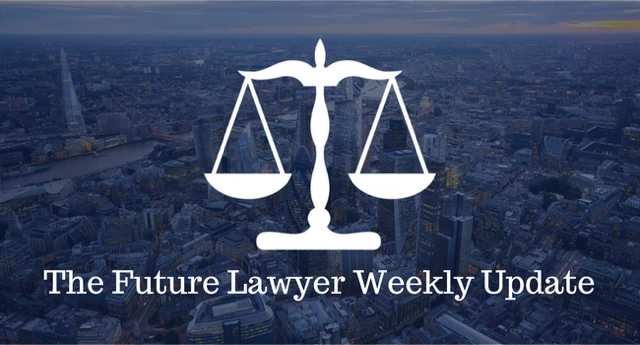
Prioritising Mental Health
June 18, 2023
The Future Lawyer Weekly Briefing – W/C 19th June 2023
June 19, 2023Disclaimer: This article is written by Jessica Williamson. Any views and opinions expressed in this article are those of the writers and do not necessarily reflect the views or positions of the team editor nor any entities they represent
Vicarious liability has been an unsettled area of law for some time now, and the changes to working patterns with the rise of the gig economy are only further complicating what is already a volatile field. Is it time for a radical rethinking of the doctrine, and its schematic separation of employees and independent contractors?
What is the Gig Economy?
The gig economy refers to a labour market that relies heavily on temporary and part-time positions, filled by independent contractors and freelancers rather than full-time, permanent employees. These short-term workers are paid on the completion of specific tasks, rather than being paid an hourly or monthly salary; for example, an Uber driver in the UK will receive a fixed fee for every journey he makes, rather than being paid on the basis of how many hours this journey has taken him. Largely as a result of the coronavirus pandemic, the number of gig economy workers in the UK grew from 4.7 million in 2019 to 7.25 million by 2022, and it is expected that this number may rise to 14.86 million by 2026.
Participation in the gig economy may arise for a number of reasons. The flexibility inherent in the model grants individuals autonomy over their working hours, enabling them to balance work with family commitments; for example, they might avoid childcare costs by choosing to work evenings rather than during the day. Equally, gig economy workers are often older students, looking to supplement their income with flexible work that will not encroach upon their studies. Although common gig economy workers include taxi drivers, dog walkers and cleaners, the model also extends to qualified professionals, like freelance writers and independent contractors in accounting firms.
It will not come as a surprise that the gig economy does have its dark side. Workers have little to no job security, and lack the benefits of paid holiday leave, sick leave and maternity leave. From a psychological standpoint, it is more common for gig employees to experience job dissatisfaction, given that they are far less likely to feel part of a working community, or to feel affiliated with a firm in the way a traditional employee might.
How does it relate to vicarious liability?
Vicarious liability is the doctrine in tort law that enables employers to be liable for the torts (civil wrongs) committed by their employees. As the law stands, if A is B’s employer, A will be vicariously liable in respect of a tort committed by B if that tort is committed by B in the course of employment. Though there exists various policy justifications behind the doctrine, such as the expectation that an employer will be richer than an employee and thus more capable of paying compensation, the driving principle reason for its application is that of enterprise risk: if an organisation seeks to make money from engaging in an activity, and others suffer a loss as a result, the organisation should compensate for this loss. If they wish to obtain the gains from this activity, it is only right that they should bear the losses as well.
Formerly, vicarious liability was only applicable to relationships between employers and employees. However, since Various Claimants v Catholic Child Welfare Society [2013], the Courts have expanded its scope to include relationships ‘akin to employment’, which may include volunteers and, as recently affirmed in Trustees of the Barry Congregation of Jehovah’s Witnesses v BXB [2023], unpaid officials with positions of responsibility in religious organisations.
Crucially for the purpose of the discussion of the interplay between vicarious liability and the gig economy, employees have typically not been liable for torts committed by independent contractors. The reasoning behind this long-established rule is twofold. Firstly, employers are assumed to have more control over employees than independent contractors; it is only just, therefore, that they should be rendered liable for employees’ torts, as they have not only instructed the tortfeasor to embark on the course of action that led to the tort, but are also likely to have advised them on how to carry out this action. Secondly, work done under an employment contract must typically be carried out by the employee and no one else, whereas an independent contractor is typically free to sub-contract any work to third parties. Given that an employer has not explicitly assented to have their work carried out by these third parties, it would seem unwise to render them vicariously liable for their torts, with liability instead resting with the independent contractor.
Is the law in need of reform?
Vicarious liability has been an unsettled area of the law for years, primarily due to the rise of child sexual abuse scandals that came to light in the 2010s. For the courts’ current stance on what is a volatile area of law, we must turn to Trustees of the Barry Congregation of Jehovah’s Witnesses v BXB [2023]. Most relevant for the purposes of this article is Lord Burrows’ affirmation in Paragraph 58 that ‘there is no vicarious liability where the tortfeasor is a true independent contractor in relation to the defendant’. Yet he goes on to specify a number of considerations the Court must take into account when deciding whether a relationship is akin to employment, which are as follows:
- Whether the work is being paid for in money or in kind
- How integral to the organisation is the work carried out by the tortfeasor
- The extent of the defendant’s control over the tortfeasor in carrying out the work
- Whether the work is being carried out for the defendant’s benefit or in furtherance of the aims of the organisation
- What the situation is with regard to appointment and termination
- Whether there is a hierarchy of seniority into which the relevant role fits.
In light of the rise of the gig economy, Lord Burrows’ two statements seem somewhat incompatible. The simplistic division between employees and independent contractors seems obsolete, since many of the conditions establishing a relationship as one that could trigger vicarious liability apply to independent contractors in the gig economy. Let us take, for example, an Uber driver. He is being paid in money, and his work is integral to the organisation; indeed, the organisation would not exist if there were no drivers. This fulfils the first and second of the conditions. His employers have a large amount of control over what he can do; although his contract marks him out as self-employed, he has no control over what a customer pays for a trip, and his vehicle is subject to vetting by Uber, satisfying the third condition. His work is certainly being carried out for the benefit of Uber, and he can be penalised if he refuses or cancels trips that might advance this benefit, fulfilling the fourth condition. Regarding the fifth condition, an employment tribunal has recently designated Uber drivers as ‘workers’, meaning they can, just like employees, bring claims for unfair dismissal. Finally, it is clear that he does fit into a ‘hierarchy of seniority’, with drivers subjected to penalties if they do not follow the route recommended by their superiors.
Were an individual, like Mark Sewell in the case of BXB, to fulfil the above criteria laid out by Lord Burrows, his relationship with the Church would be considered ‘akin to employment’, which would satisfy the first stage of the two-stage test for establishing vicarious liability. However, were an independent contractor also to fulfil the above criteria, the claim would not be considered, simply by virtue of a job title that inadequately encapsulates the role they play in the modern economy.
Inevitably, organisations will not always be vicariously liable for the torts of independent contractors. Yet this must be not because of their job title, but rather because they genuinely do not satisfy the requisite criteria. For instance, in Barclays Bank plc v Various Claimants [2020] UKSC 13, the doctor concerned was an independent contractor who would not have satisfied the test, owing to the fact that a medical practitioner cannot be considered a fundamental part of a bank, and owing to the lack of control the bank staff would have wielded over the doctor’s actions. Nonetheless, if the Courts are going to extend vicarious liability to relationships ‘akin to employment’, this will inevitably apply to at least some relationships between independent contractors and employers in the gig economy, highlighting the value of a case by case approach.
Implications
For policy reasons, it is unlikely that the courts really will change the rule that employers cannot be held vicariously liable for torts committed by independent contractors. Knowing that they will not be held liable for torts committed by those working for them inculcates business owners with the confidence to hire independent contractors, which is often crucial to the smooth operation of the businesses that sustain the economy. The courts are understandably reluctant to jeopardise confidence in the economy on this basis.
Nonetheless, on a principled level, it seems arbitrary and unjust to categorically ban vicarious liability for those who hire independent contractors in the gig economy, where such independent contractors are increasingly assuming the role of traditional employees. Instead, it may be more valuable for the courts to decide cases on the basis of whether there has been an enterprise risk, the principle upon which the doctrine of vicarious liability is founded, and thus the principle that must surely dictate when it applies.





